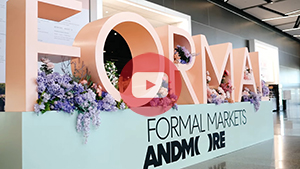FINANCE
What’s Trending in the Apparel Sector? As It Turns Out, Beauty Isn’t Just Skin Deep
One of life’s great balancing acts is the ongoing war between wants and needs. As 2024 picks up steam, consumer habits that came to the forefront during the holiday shopping season continue to manifest.
According to a recent report from Circana, a leading adviser on consumer behavior and a trusted resource for 7,000 brands and retailers, consumer spending is more rooted in need and practicality than desire and indulgence.
But one nonessential category shows substantial growth and is starting to “eat the lunch” of the apparel sector, according to Kristen Classi-Zummo. The California Apparel News reached out to the director and industry analyst for apparel at Circana for her economic outlook on the apparel industry and the apex predator snatching away the consumer’s closely guarded purchasing power.
CAN: What were your key findings coming out of the holiday shopping season?
KC-Z: Overall retail declined, with apparel following a similar trajectory in dollars and units. There have been a diminished sense of urgency and an absence of innovation I’ve been talking about for some time. It started about a year or two ago with all the excess inventory and bottleneck effect from the pandemic, where we saw the same things on the floor for several seasons in a row, especially in activewear and loungewear. So now, even though we’re seeing the inventory challenges subsiding, there’s still this issue of no new trends, styles or anything enticing consumers to buy apparel.
CAN: Given that the economy is rather like fashion itself and therefore unpredictable, what strategies are you recommending?
KC-Z: The apparel industry needs to take learnings from all this. Brands and retailers that are really focusing on leaning into trends—whether total new innovation or positioning products in a new light—are winning. We’re not in an all-out recession, so consumers are spending but being very careful where. And with a limited spend, they’re making tough choices. In that kind of environment, brands and retailers need to be checking all the boxes.
CAN: How is the health of the apparel sector across the high-low spectrum?
KC-Z: Within apparel, one channel is outperforming, and that is off-price, which did well all last year. Brands still have power, so we’re not seeing consumers trading down to private label; they’re just looking for more affordable ways to buy them. We’re even seeing growth in warehouse clubs like Costco, which is a small part of the industry but growing. Consumers can buy national brands they love but at a great price.
CAN: Your research has revealed that one fashion-adjacent industry is on a growth curve, and apparel companies should take note.
KC-Z: Yes, out of all the categories in general merchandise, the retail category that grew in double digits in Q4 of 2023 was prestige beauty. In this environment, where everyone is holding back, beauty, which is a nonessential category, continues to outgrow the market. There are so many things they are doing with newness, new brands, a huge surge on TikTok and a younger consumer investing in the category. It just goes to show you that when done right there is growth to be had.
CAN: Today’s youth don’t seem to enjoy expressing themselves with fashion as much as in previous decades.
KC-Z: My personal perspective when I go to a really prominent mall is, “Oh my gosh. All the teenagers are in pajamas, sweatpants and slippers!” So I agree. But I also think they are interested in fashion; they’re just selective. In adulthood we’ve adopted comfort, loungewear and working from home, but they grew up on that. And when we were growing up you expressed yourself in what you wore, but now there are just so many outlets to do that—beauty being one of them. I talk to my clients all the time about how the beauty industry is eating our lunch. If a teen has $50 to spend for themselves, maybe 10 or 15 years ago the majority of that went to apparel; now it’s beauty, and that was really born on TikTok. So status symbols for Gen Z have shifted from high-end fashion and accessories to more-attainable beauty and everyday products.






















